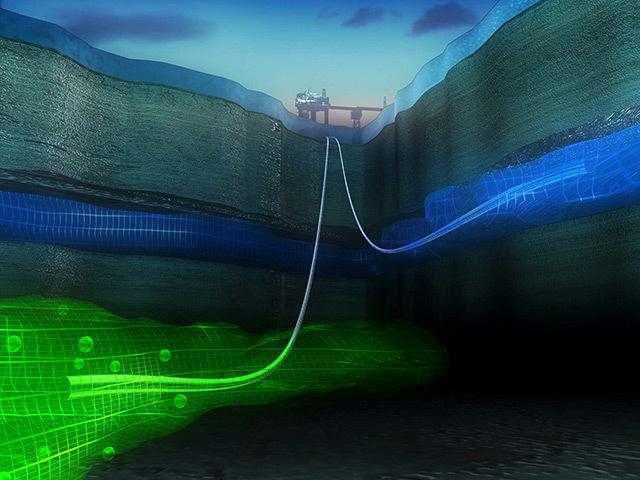
We all know how important it is to cut the carbon footprint created by humans. And while we’ve demonstrated that we can do this well, the problem isn’t in capturing the carbon, but rather in storing it. Carbon capture and storage, or CCS for short, is essential for helping to cut the world’s carbon dioxide emissions. At the moment, there are less than two dozen CCS projects scattered around the world. While this is partly down to the costs involved, it’s also largely down to the uncertainty of the technology’s viability.
A new study, published recently in Nature Scientific Reports, demonstrates how it’s possible to insert enough carbon dioxide injection wells across the globe to meet the emission cut goals set out by the Intergovernmental Panel on Climate Change (IPCC). “The great thing about this study is that we have inverted the decarbonization challenge by working out how many wells are needed to achieve emission cuts under the 2-degree (Celsius) scenario,” said Philip Ringrose, professor at the Norwegian University of Science and Technology (NTNU), a geoscientist at the Equinor Research Center located in Trondheim, and lead author of the study. It works out to around 2,000 wells per region, or 12,000 in total across the world, which is a fraction of that of the petroleum industry.

CREDIT Illustration: Equinor
To get an idea of how much space there is potentially to store carbon dioxide, Ringrose and his co-author, Tip Meckel from the University of Texas Bureau of Economic Geology, first looked at worldwide continental shelves. Previous studies of this nature mainly focused on the estimated volumes in different rock formations on the continental shelf.
However, both Ringrose and Meckel agree that there’s a better chance of finding carbon dioxide storage areas if those rock formations that can handle intense pressure are looked at first. The reason for doing this is because the injection of carbon dioxide into a rock formation will increase its pressure within. If too much pressure is exerted for the rock to handle, cracks may appear deeming the project to be unsafe, needing to close.
So, with that in mind, the researchers developed a way of classifying different storage formations by way of their ability to store carbon dioxide. Using this kind of system, Class A are those without any pressure limits and therefore the most preferred. Class B are those where carbon dioxide can be injected up to a certain limit, and Class C are those sites which would need to carefully managed. “We argue that this transition from early use of CO2 injection into aquifers without significant pressure limits (Class A), through to CO2 storage in pressure-limited aquifers (Class B) and eventually to pressure management at the basin scale (Class C), represents a global technology development strategy for storage which is analogous to the historic oil and gas production strategy,” wrote the researchers. As more experience is gained in the injection of CO2 into the rock formations, Class B and C areas will become more usable.
As well as finding enough space to inject the CO2 experts also have to find a way of injecting it fast enough to suit the requirements as set out by the IPCC, which currently stands at around 6 to 7 gigatons per year until 2050. But, even with all 19 large-scale CCS projects in operation currently and the 4 being built, that still only accounts for around 36 million tonnes per year. Considering a gigaton is the equivalent of 1,000 million tonnes, something pretty drastic would need to be done to reach those targets. But, as impossible as it may sound, both the IPCC and researchers are confident it can be achieved. “With this paper, we provide an actionable, detailed pathway for CCS to meet the goals,” said Meckel. “This is a really big hammer that we can deploy right now to put a dent in our emissions profile.”
